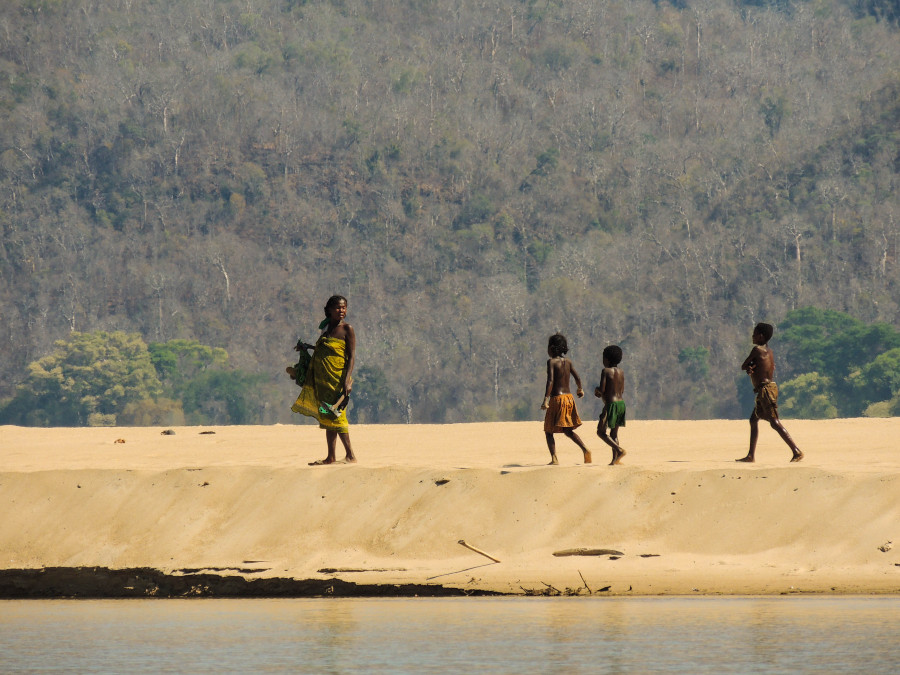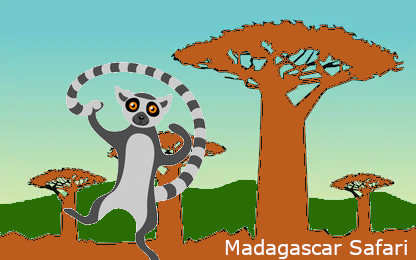- INTRODUCTION
- MALAGASY CULTURE
- MALAGASY TRADITIONAL SPORT
- MALAGASY CUISINE
- BEACHES AND RIVERS
- MONEY AND CREDIT CARDS
- PURCHASE TIPS
- SITES AND ACTIVITIES
- MONUMENTS
- MALASY HANDICRAFTS
- TIPS FOR TRAVELLERS
- MADAGASCAR CONNECTING FLIGHTS
- MADAGASCAR NATIONAL PARKS AND RESERVES
- FAUNA AND FLORA OF MADAGASCAR
- PUBLIC HOLIDAYS IN MADAGASCAR
- THE SOUTH WEST AND WESTERN REGIONS
- THE SOUTH EAST REGION
- THE NORTH WEST REGION
- THE NORTH EAST AND EAST REGIONS
- THE CENTRAL HIGHLANDS
MADAGASCAR: THE SOUTH WEST AND WESTERN REGIONS
Here is the land of these masterpieces of nature, the Tsingy of Bemaraha or the ruiniform massifs of Isalo. Crossing its large areas is like opening a book on several features of the malagasy culture, let alone the permanent communion with the ancestors. The southwest is also synonymous of a fabulous submarine universe with one of the longest coral barriers in the world. Its vegetation, “B” standing for Baobabs and the Bush, makes it the promised land for naturalists.
Tulear
Lying calmly between the rivers of Onilahy and Fiherenana, dubbed “the White” at times because of its implacable sunshine, or “tsy miroro” (the one that never sleeps) for the festive propensity, so they say, of its inhabitants. The floristic peculiarities of its hinterland are announced by the majestic banian, “the one tree forest” of the village of Miary 9 km away, or by the Arboretum of Antsokay, 12 km from the city.
Tulear to the south
 Sarodrano 20 km away, is famous for its caverns with fresh water close to the sea. Saint Augustin, a fishermen’s village nestling in a bay bordered with long limestone cliffs ; Anakao, 22 km farther, with its immaculate beach and lagoon ; and just opposite, the islet of Nosy Ve which offers one of the most splendid diving sites in Madagascar. Tsimanampesotse National Park, 40 km from Anakao with its colonies of pink flamingos and blind fish. The seven sacred lakes, about 60 km from Tulear. Between Betioky and Ampanihy, several Mahafaly tombs, real bright coloured and small mausoleums.
Sarodrano 20 km away, is famous for its caverns with fresh water close to the sea. Saint Augustin, a fishermen’s village nestling in a bay bordered with long limestone cliffs ; Anakao, 22 km farther, with its immaculate beach and lagoon ; and just opposite, the islet of Nosy Ve which offers one of the most splendid diving sites in Madagascar. Tsimanampesotse National Park, 40 km from Anakao with its colonies of pink flamingos and blind fish. The seven sacred lakes, about 60 km from Tulear. Between Betioky and Ampanihy, several Mahafaly tombs, real bright coloured and small mausoleums.
Tulear to Isalo and Ranohira (RN7)
Zombitse Vohitsara and Vohimena National Parks, well known by ornithologists. Ilakaka, once small anonymous, is now a mushroom village which has stemmed from the saphire fever. Isalo, one of the most stunning tourist curiosities in Madagascar with its relief sculpted by erosion. A number of tours may be organized, from the easiest, like the well known one to the Natural swimming-pool, to the most demanding. All information is available at the Park office at Ranohira, where several hotels are concentrated.
From Tulear to Morondava
Ifaty and Mangily, resorts which are very much enjoyed by diving amateurs, 26 km to the north of Tulear. Andavadoaka, 50 km from Morombe, with its wild creeks and coral reefs. Morombe, 284 km to the north of Tulear, port of registry for small sailing boats and schooners servicing along this coastline. The Mikea forest which attracts researchers, film makers or ordinary people out of curiosity to learn more about these mysterious social groups.
Morondava and its surrounding
Morondava is immortalized by the scene of the pirogues returning ashore at sunset. Historical town of the Menabe Sakalava kingdom. Sakalava and Vezo funeral art, subject of all sorts of interpretations to date. The Baobab lane, the most photographed spot in Madagascar. The Baobab in love and the Host Village of Mangily, the sakalava tombs are among the sights close to this lane. The special reserve of Andranomena is appealing to visitors in many ways: exceptional fauna and flora, lakes and birds are among the interests in the special reserve. The protected area of central Menabe stretching over 100 000 ha of dense dry forest of deciduous plants, Kirindy and Ambadira, 24 000 ha of mangroves and 1000 ha of humid areas, of which the Lake Bedo. It is reputed for the riches of its animal species representative of the region. Belo-sur-Mer is well known for building schooners after the model of a Breton sailor. Among other things, the spot offers you the National Park Kirindy Mitea, an area of transition between the dry and the sub-arid climate of the south; it is an area recognized for the endemism of its lemurs, birds and baobabs.
From Belo-sur-Tsiribihina to the Tsingy
Belo, terminus of the descent of the Tsiribihina started at Miandrivazo, a place also associated with the fitampoha, the royal relics bathing ceremony. The fabulous spot of the Tsingy de Bemaraha, “forest” of bluish karstic peaks which sprung up from the sea millions of years ago. This spot has been classified as World Heritage by Unesco and offers one of the most spectacular scenery in the great island.
